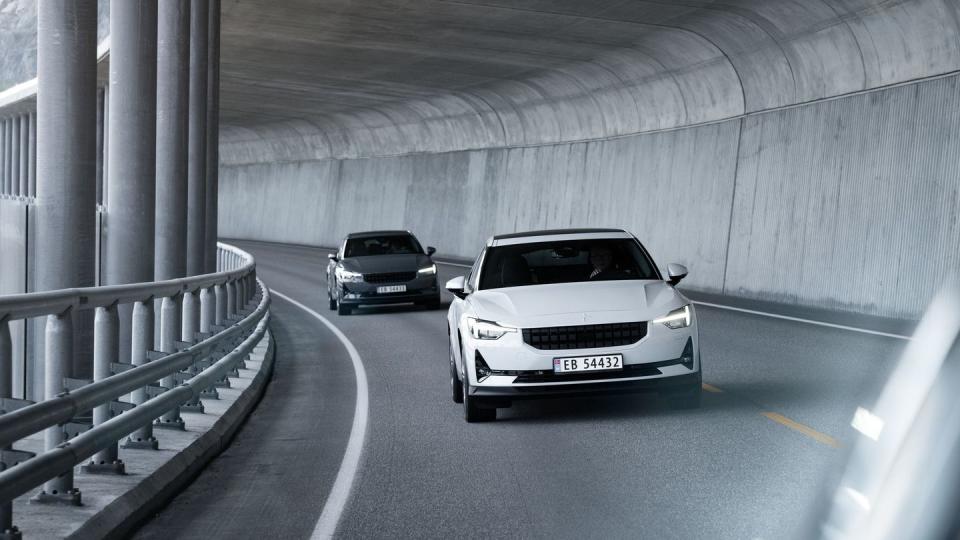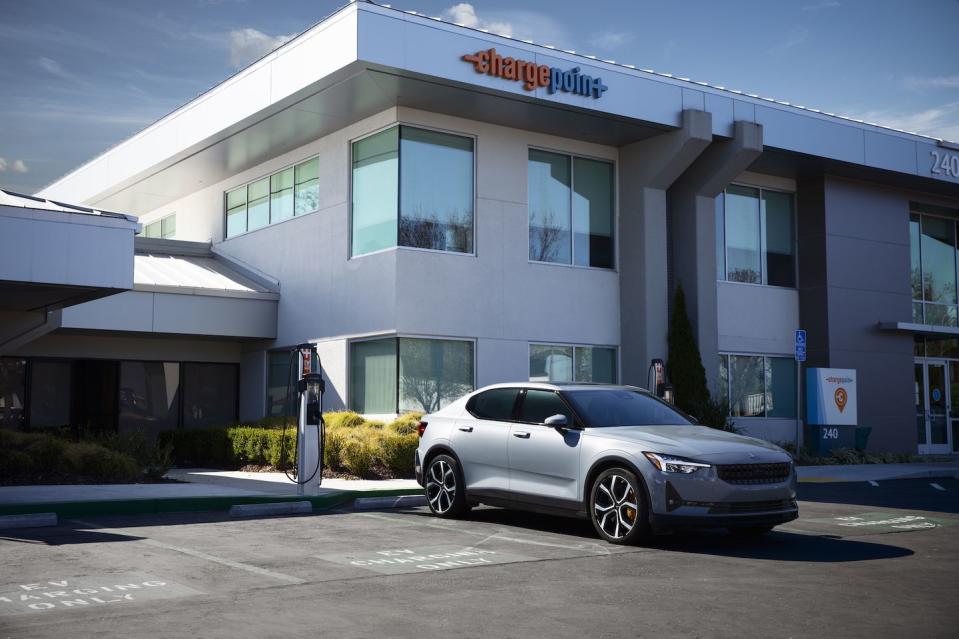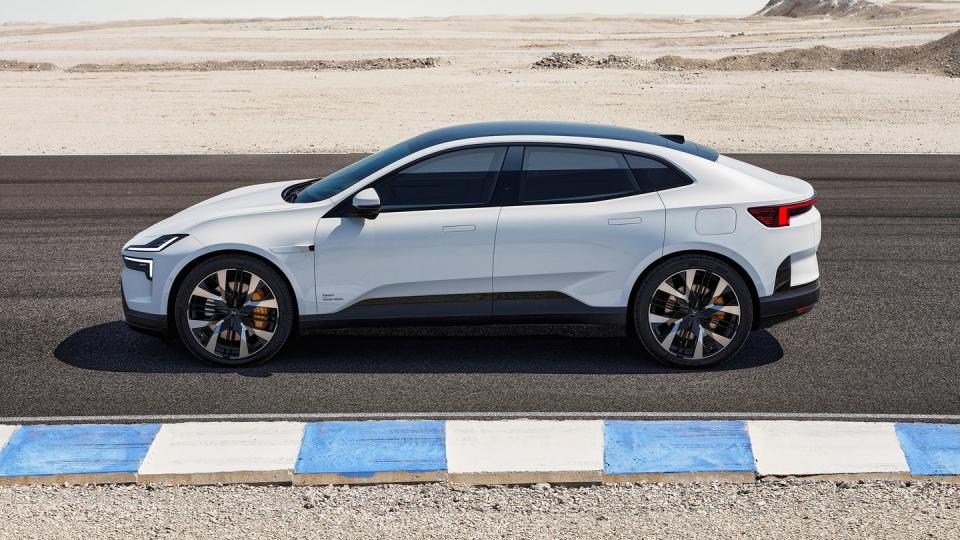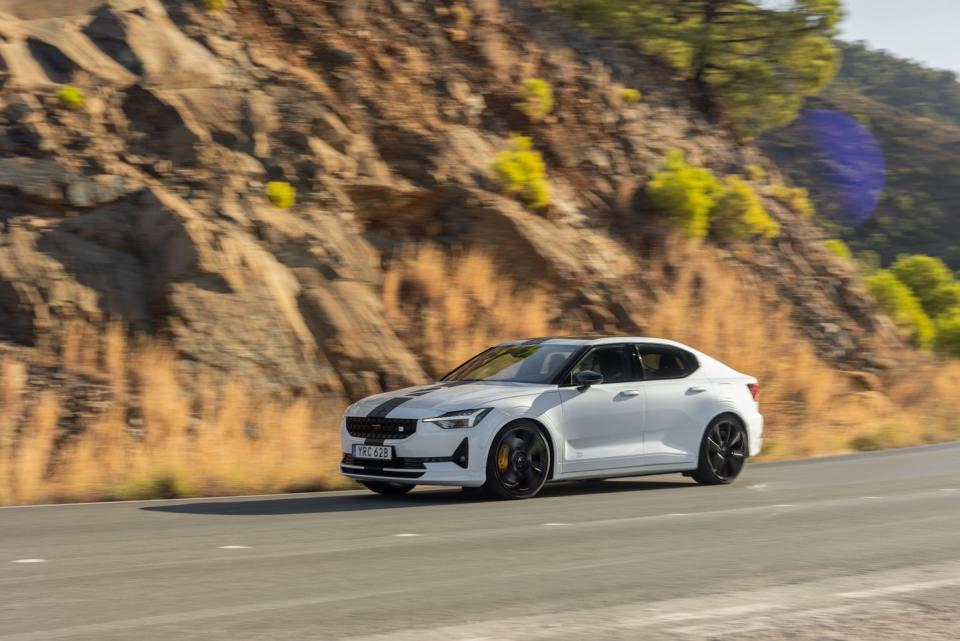Here’s What the Polestar, Volvo Breakup Means for Consumers

Polestar is in the midst of a major corporate shakeup, as Volvo plans to shed its ownership stake in the electric-vehicle brand for its own EV independence.
Volvo doesn't want to relinquish its whole stake in the company just yet, as it has announced a financial plan to retain around 18% of Polestar.
As parent company Geely takes primary control over Polestar, the process of change will have few effects on consumers in the short term, though Polestar's US prospects need some attention.
It's been almost a month since the initial breakup between Polestar and Volvo went down, but now the gritty details need to be hashed out. In this case, instead of returning cherished clothing items, Volvo is divvying up its financial stake in Polestar to the tune of millions of dollars.
Specifically, executives at Volvo have proposed an amicable division of assets, shedding 62.7% of its holdings in Polestar to the company's shareholders. The ending result of this proposed transition would be a remaining 18% stake in Polestar until 2028, which Volvo says will be enough of a stake to continue exerting some influence over Polestar.

Integral to this situation is the parental presence of Geely Holding, a Chinese company with deep investments in the electric-vehicle realm. Acquiring Volvo in 2015, Geely has continued to develop its EV portfolio with brands like Lotus, Smart, and Zeeker, and now it's about to take control of Polestar, too.
That's because, in the wake of Volvo shedding its ownership stake, Polestar will be largely managed and operated by Geely. Volvo says this move will give them more independence, particularly in the EV realm where the two companies have historically shared platforms. Notably, Polestar also owes Volvo around $1 billion in convertible loan form.
Even so, Volvo is vying for independence while holding onto the idea of Polestar as its project, not its direct competitor. But how does Polestar feel about all this change?
"At the same time as this transaction allows us to welcome new shareholders, our relationship with Volvo Cars remains," said Thomas Ingenlath, Polestar CEO. "Our customers will continue to benefit from our existing collaboration, including across commercial and after sales—providing peace of mind and consistency."
Ahead of launching its Polestar 3 and Polestar 4 crossovers, Polestar is taking this transition as a stepping stone to the next phase in its relatively fledgling legacy. Going from producing one car to producing three cars is a big shift and executives at Polestar believe the incoming Geely-based operation will be ultimately less complex, too.

Beyond shared platforms and brand history, one consumer effect of this slow breakup is the continued accessibility to certain Volvo service centers for Polestar customers. Continuing as normal, the limited number of official Polestar sales and service spaces in the US means Volvo locations will continue to serve Polestar customers.
But there is another reason why Volvo wants to continue asserting its place in Polestar's life, and it actually benefits Polestar, according to iSeeCars Executive Analyst Karl Brauer.
"The new ownership structure allows for more flexibility in Polestar’s design and engineering," Brauer said in an email to Autoweek. "I see Geely taking advantage of this by leveraging its global EV resources and saving money where it makes sense. But Polestar is too closely tied to Volvo for the brands to simply walk away from each other."

What that means for current or prospective Polestar owners is a slow but steady increase in diversity between Polestar products and Volvo offerings. Specifically, Brauer sees a niche for Polestar in delivering more of Geely's design ethos and product execution to US customers, who rarely interact with Geely brands save for Volvo and Polestar.
In the short term, it's unlikely that much will change, especially as the Volvo EX90 and Polestar 3 prepare to hit the market. However, this slow-to-change mentality is partially because the collaboration between the two Swedish brands was actually a success, too.
"Industry experts and savvy consumers certainly knew of the close ties, but I think the unique styling and messaging was as well executed as other related brands, like Lexus and Toyota or Hyundai and Kia," Brauer said. "In the world of high-production-cost electric vehicles, it made sense to share the engineering resources across two brands."

Frankly put, stagnating EV demand in the US and rising competition from startup and legacy automakers are more to blame for Polestar's struggles, Brauer asserted. A look at sales numbers from 2023 backs this up, too, as the brand managed 55,000 unit sales globally last year (after projecting 80,000 units) and only 6736 units in the US.
Up against Tesla, Polestar stands a weak chance in its current state, but it may not matter too much if Geely finds the right niche for Polestar. And, in a turn of events, that niche may actually mean introducing Chinese EV technology to the US, or at least doing so openly.
"Volvo has worked hard to maintain its Swedish roots, keeping much of its Chinese ties under wraps for public perception," explained Paul Waatti, Director of Industry Analysis at AutoPacific. "At the same time, Polestar has embraced some of the tailwinds that come with adopting advanced technology from its Chinese donor."
The upshot of this is perhaps more of a success story for Geely than for Volvo or Polestar, ultimately. Building two car brands from one and with linked but still distinct customer bases and messaging, Geely is the force steering the ship come 2024, Waatti said.
"The companies maintain a relationship that enables technology and production sharing where it makes sense, but each will continue to solidify unique identities to carry into the future," Waatti said in an email to Autoweek. "Volvo and Polestar are competing on the global stage and, importantly, in the US market, a market that has proven near-impossible for Chinese-backed automakers to break into."
Is exploring other vehicle segments like sports coupes important to Polestar's success? Why or why not? Please share your thoughts below.

 Yahoo Autos
Yahoo Autos 